How to Care For an Orchid – Indoor Tips
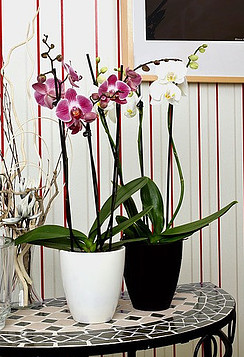
How to Care For an Orchid – Indoor Tips
Orchids are one of the most popular houseplant gifts. They date back to 500 BC in Greece, Rome, and China. When explorers in the early 1800’s stumbled upon them, they brought the beautiful plants back to their home countries. Orchids are located everywhere except Antarctica. Here are some indoor tips on how to care for an orchid. If you follow the advice below, you will be rewarded with flowering orchids for many years to come.
How to Care For an Orchid
The easiest variety of orchid to grow and rebloom is the Phalaenopsis (meaning “like a moth”). It is the most common orchid found in grocery stores, garden supply stores, nurseries, and big box stores. In nature they grow in trees without drawing any nutrients from the tree. Instead, they get nutrients from the air, natural debris, and rainwater. This type of plant is called an epiphyte. The Christmas Cactus is also in this category.
Orchids are quite easy to care for once their basic needs of water, proper light and temperature, growing medium, and humidity are met.
(Some of the links within this post are affiliate links on which I receive a small compensation from the sale of certain items.)
(As an Amazon Associate I earn from qualifying purchases.)
How to Grow an Orchid
When you bring your orchid home, you will probably need to repot the orchid. You want to provide it with the best medium possible in order to guarantee a beautiful plant.
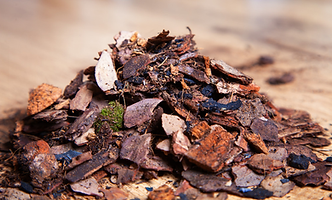
Growing Medium
When potting orchids, you want to simulate their natural environment. Since orchids are epiphytes, their roots like proper air circulation and substances on which their roots fixate. The air provides rich nutrients which they use to grow. Substances like fir bark, lava rock, coconut fiber, redwood bark, perlite, sphagnum moss and others also provide nutrients and create a stable stand to which their roots can attach.
Try making your own medium by following the video below.
You can also purchase a good orchid mix kit (All Purpose Orchid Growing Kit from Amazon) including slotted pots, fertilizer and high quality medium. However, if you only need a medium, try Sun Bulb 5011 Better Gro Phalaenopsis Mix from Amazon.
The type of medium is determined by the orchid variety. Phalaenopsis orchids prefer coarse bark, cattleyas type prefer medium bark, and young orchids are best grown in fine bark.
Pots
There are specific pots available for orchids. Swiss cheese style pots (sold on Amazon) are used to simulate a natural environment where the orchid roots either attach to tree bark or rocks. This style pot is used to enhance aeration to the roots, however if the orchid has good air circulation in the pot it is not necessary.
Orchids prefer a snug fit and do not need to be repotted frequently. However, if you notice any of the signs below, then it’s time to repot.
-
yellowing lower leaves that are starting to die back
-
roots cascading all the way down the edge of the pot
-
stems getting leggy and flopping over
-
the large bark has decayed into much smaller pieces and/or soil
Before transplanting, water the plant well so the roots are soft and pliable. This is helpful when repotting in a fresh medium.
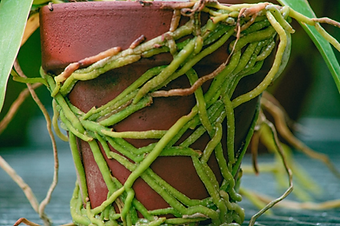
Also, soak your medium in water overnight before repotting so the bark absorbs moisture.
Here is a YouTube video explaining the repotting process.
Light Requirements
Orchids prefer bright, indirect sunlight. Place them in an east, south or west facing room where there is bright light, but not direct light. If the leaves turn a pale green, they are getting too much sun. They also may become scorched in direct sunlight.
If the leaves are too green or the buds are dropping, they are probably not getting enough sun and will not produce many blooms.
Since orchids are originally from the tropics, they prefer temperatures between 60 (minimum) and 90 (maximum) degrees Fahrenheit (16-32 degrees Celsius).
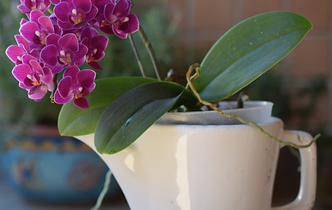
Watering
Orchids prefer to dry out in between waterings. They can usually go seven days in the summer without watering. Use the finger test for determining whether or not it needs water. Stick your finger one inch into the medium. If it’s dry, water it. If not, wait another day.
Water with room temperature water or rain water directly into the medium early in the day. Do not water into the heart of the plant. You can also immerse the pot into a container of water for a few minutes. Then drain it to release all excess water. If the plant is sitting in water, the roots will rot.
Humidity
Orchids will thrive in a humid place.
Adding moisture to the air is rather easy for indoor plants. Here are some tips for adding humidity to your orchids.
-
Place the orchids in a humid room such as the kitchen or bathroom if there are windows.
-
Group your plants together so they can use each others’ humidity through transpiration. Transpiration is the process of water movement through a plant and its evaporation from aerial parts, such as leaves, stems and flowers. (Wikipedia.org)
-
Place plates full of pebbles underneath your pots and fill them with water. Evaporation will take place, hence, adding humidity to the area.
-
Place pots of water around your plants causing evaporation of water into the air.
-
Spray your plants with a hand held sprayer purchased at any supermarket or dollar store.
Fertilizing
Orchids need to be fertilized at different times during their growing period. After the orchid has bloomed and the last blossom has fallen off, fertilize every other week. There is no need to fertilize while the orchid is in bloom.
When the orchid is going through a growth spurt and is not blooming, fertilize every other week. The water supplied with the fertilizer is sufficient for that week’s watering.
It is best to fertilize your orchid every other watering with a good orchid fertilizer. (Espoma Orchid Plant Food from Gardeners.com) Fertilize it with the concentration suggested on the container.
Insects
Orchids are sometimes infected with mealy bugs, scale and aphids. These can easily be washed off with an insecticidal soap. (Bonide Insecticidal Super Soap Ready to Use Spray from Gardeners.com)
How to Force Orchids to Rebloom
Orchids normally bloom twice a year and will keep blooming for months at a time.
Once your orchid has finished blooming, cut the blooming stem about three quarters of an inch above the first node on the stem. Check above for signs that the orchid needs to be repotted. If it needs to be repotted, the time to do it is when it has finished blooming.
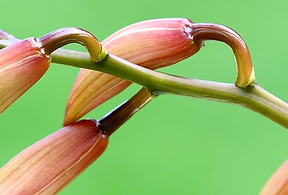
Place the orchid where the temperature will drop about 10 degrees each night. This simulates its natural environment. Placing it in an east or west facing window away from a heat source and drafts should be ideal. Turning down the temperature in the evenings when you sleep by about 10 degrees should also suffice.
Follow the above information for watering and fertilizing.
If you follow this process, you should have blooms every year.
Final Thoughts on How to Care for an Orchid Indoors
An orchid is an exotic and beautiful addition to your indoor garden. If you provide the proper medium, light, water, humidity, and fertilizer, you will be rewarded with many years of blossoms from your favorite Phalaenopsis.
I hope you enjoyed this post. Please share it with others and leave a comment below. I’d love to hear from you!
Happy Gardening!
Nina
